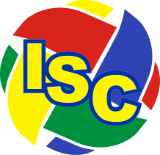


- March 1st, 2014 (midnight, PST): Regular/Short/Poster/Demo Paper Submission (Extended)
- March 1st, 2014 (midnight, PST): Industry Paper Submission (Extended)
- April 8th, 2014: Notification Date (We are sorry to postpone this due to deadline extension)
- The hotel reservation at group rate for Hyatt Regency Newport Beach is available now. Please check "Hotel Information".
- The registration is open now.
- The photos of the conference can be downloaded here.
Eighth IEEE International Conference on Semantic Computing
June 16-18, 2014
Hyatt Regency Newport Beach
Newport Beach, California, USA
http://www.ieee-icsc.org/
The field of Semantic Computing addresses the derivation of semantic information from content and the connection of semantics to knowledge, where "content" may be anything including structured data, video, audio, text, hardware, software, process, etc.
The Eighth IEEE International Conference on Semantic Computing (ICSC 2014) continues to foster the growth of a new research community. The conference builds on the success of the past ICSC conferences as an international forum for researchers and practitioners to present research that advances the state of the art and practice of Semantic Computing, as well as identifying emerging research topics and defining the future of the field. The event is located in Newport Beach, California at Hyatt Regency Newport Beach. The technical program of ICSC 2014 includes workshops, invited keynotes, paper presentations, panel discussions, industrial 'show and tells', demonstrations, and more. Submissions of high‐quality papers describing mature results or ongoing work are invited.
The main goal of the conference is to foster the dialog between experts in each sub‐discipline. Therefore we especially encourage submissions of work that is interesting to multiple areas, such as multimodal approaches.
Note: ICSC will be held in February from 2015.
SUBMISSIONS
Regular Papers, Short Papers, and Industry Papers.
Authors are invited to submit an 8-page (regular), 4-page (short), or 6‐page (industry) technical paper manuscript in double-column IEEE format following the guidelines available on the ICSC20104 web page.
Demonstration Papers and Posters.
Authors are invited to submit an 2-page (demonstration or poster) technical paper
manuscript in double-column IEEE format following the guidelines available on the
ICSC2014 web page.
Workshops Proposals.
The organizing committee invites proposals for workshops to be held in conjunction with the conference. These will focus on specific topics of the main conference. More information is available on the ICSC2014 web page.
The Conference Proceedings will be published by IEEE Computer Society Press. Distinguished quality papers presented at the conference will be selected for publication in internationally renowned journals.
AREAS OF INTEREST INCLUDE (but are not limited to):
Semantics based Analysis
- Natural language processing
- Image and video analysis
- Audio, music and speech analysis
- Data and web mining
- Behavior of software, systems, and networks
- Services and networks
- Security
- Privacy
- Analysis of social networks
Semantic Integration
- Metadata and other description languages
- Database schema integration
- Ontology integration
- Interoperability and service integration
- Semantic programming languages and software engineering
- Semantic system design and synthesis
Applications using Semantics
- Big Data
- Search engines and question answering
- Semantic web services
- Content-based multimedia retrieval and editing
- Context-aware networks of sensors, devices and applications
- Devices and applications
- Digital library applications
- Machine translation
- Music description and meta-creation
- Medicine and Biology
- GIS systems and architecture
Semantic Interfaces
- Natural language interfaces
- Multimodal interfaces and mediation technology
- Human centered computing
- Dec 15th, 2013: Workshop Proposals
- March 1st, 2014 (midnight, PST): Regular/Short/Poster/Demo Paper Submission
- March 1st, 2014 (midnight, PST): Industry Paper Submission
- April 8th: Notification Date
- April 20th: Camera-Ready & Registration
- June 16th-18th, 2014: Conference
Organizing Committee
General Co-Chairs
Abha Moitra, GE Research, USA
Phillip Sheu, University of California, Irvine, USA
Program Co-Chairs
Robert Mertens, HSW University of Applied Sciences, Hamelin, Germany
Giovanni Pilato, Italian National Research Council, Italy
Mei-Ling Shyu, University of Miami, USA
Nadine Steinmetz, Business Software Solutions GmbH, Germany
Workshop Co-Chairs
Joseph Barr, San Diego State University, USA
Shu-Ching Chen, Florida International University, USA
Lars Knipping, Berlin Institute of Technology, Germany
Newton Lee, ACM Computers in Entertainment, USA
Joanne Luciano, University of California, Irvine, USA
Industry Co-Chairs
Barbara Starr, SemanticFuse, USA
Tong Zhang, HP Labs, USA
Panel Co-Chairs
Brian Harrington, University of Toronto, Canada
David Ostrowski, Ford, USA
Demo Co-Chair
Anne Hunt, Otto, Inc.
Publicity Co-Chairs (Tentative)
Jeffrey Abbott, Del Rey Systems, USA
Keith Chan, Hong Kong Polytech University
Brian Harrington, University of Toronto, Canada
Wolfgang Hürst, Utrecht University, The Netherlands
Wooju Kim, Yonsei University, Korea
Yonghong Tian, Peking University, China
Atsuo Yoshitaka, JAIST, Japan
Chengcui Zhang, University of Alabama at Birmingham, USA
Publication Co-Chairs
Jennifer Kim, University of California, Irvine, USA
Tao Meng, University of Miami, USA
Best Paper Award Co-Chairs
Gerald Friedland, ICSI Berkeley, USA
Roger Zimmermann, National University of Singapore
Finance and Local Arrangement Chair
Taehyung Wang, California State University Northridge, USA
Registration and Web Chair
Shaoting Wang, University of California, Irvine, USA
------------- Accepted Workshops ---------------------
Workshop on Semantic Computing for Computational Intelligence and Creativity (SCCIC 2014)
The Third IEEE International Workshop on Semantic Multimedia (ICSC-SMM’14)
Tutorial and Workshop on Semantic Computing with Big Data (SCBD 2014)
The Third IEEE International Workshop on Data Science and Related Technologies (ICSC-DSRT’14)
CALL FOR WORKSHOP PROPOSALS
IEEE ICSC 2014: The Eighth IEEE International Conference on Semantic Computing June 16th- 18th, 2014, Newport Beach, California, USA
The IEEE ICSC 2014 organizing committee invites proposals for workshops to be held in conjunction with the conference.
The workshops will focus on specific topics of the main conference. The organizer(s) of approved workshops are responsible for advertising the workshop, distributing the call for papers, gathering submissions, and conducting the paper review process.
Any general questions regarding ICSC 2014 Workshops and workshop proposals should be directed to Prof. Shu-Ching Chen at chens@cs.fiu.edu .
Please add [ICSC2014-WS-Proposal] as subject.
Important Dates:
December 15, 2013: Workshop Proposals due
-------------------------------------------------------------
Note:
1. Every paper accepted for publication in the Proceedings of ICSC 2014 MUST be presented during the conference.
2. Every paper accepted for ICSC 2014 MUST have attached to it at least one registration at the full member/nonmember rate. Thus, for a paper for which all authors are students, one student author will be required to register at the full registration rate.
in conjunction with
Eighth IEEE International Conference on Semantic Computing
June 16-18, 2014
Overview
------------
In Kubrick's space odyssey HAL wants to have a better look to the bowman's sketches: can a machine appreciate a portrait? Can a Turing machine have an original thought ?
In the end: can a machine be intelligent and, what’s more, creative?
Computational creativity is a part of the artificial intelligence that studies how we can build a machine that creates artifacts and ideas. Creativity is something that is considered a prerogative of the humans, probably one of the most deeply connected with our humanity. Studying creativity is necessary because it is a basic part of our intelligence, moreover we think that building a creative computer is a exciting challenge and one of the final AI frontiers.
On the other side, semantic computing is fundamental for the building of creative solutions in different fields, ranging from Natural Language Processing, through Image Processing and Analysis, Music composition and so on.
Topics of interest
------------------
We invite papers from many fields that can give a contribute to understand how an intelligent and creative process can be implemented on a machine. We expect paper on the semantic computing field but also works from artificial intelligence community or at the intersection with cognitive science. We welcome also application papers and implementations supporting creative processes in humans.
Below there is a list of topics, but due to the complexity of the topics involved this list can be considered just an incomplete example
- Analogical Reasoning
- Artificial General Intelligence
- Automated Art Generation
- Automated Music Generation/Automated Composition
- Automated Poetry Generation
- Automated Story Generation
- Computational Creativity & Creativity-Support Tools
- Computational Models for Creativity
- Creativity in Problem Solving
- Evolutionary computation
- Hybrid intelligent systems, Adaptation and Learning Systems
- Semantic computing and Creativity
- Semantic computing and Knowledge mining
- Soft computing for computational intelligence and creativity
- Semantic computing frameworks for Computational Creativity
Important Dates
---------------
Submission deadline: March 15th, 2014
Notification of acceptance: May 2nd, 2014
Organizing Committee
--------------------
Submission Guidelines
---------------------
Manuscripts must be written in English and follow the instructions in the Manuscript Formatting and Templates page given in ICSC 2014 website. Only electronic submission will be accepted. Technical paper authors MUST submit their manuscripts through EasyChair, by following this link (https://www.easychair.org/conferences/?conf=icsc2014) and by selecting the "Workshop on Semantic Computing for Computational Creativity" track. Manuscripts may only be submitted in PDF format.
http://www.ieee-icsc.org/
The conference will take place at the University Center of CMU – west of the stadium
Campus Map
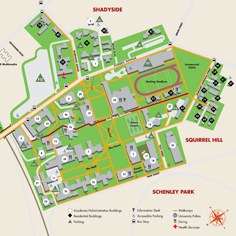
Travel:
http://www.cmu.edu/about/visit/directions-parking.shtml
Pittsburgh Airport Flyer:
http://www.portauthority.org/PAAC/tabid/241/default.aspx
keynote
by Steve Simske,
HP Labs
Abstract
Speaker Bio
Presentation Slide

keynote
by Stephen E. Levinson,
Department of Electrical and Computer Engineering and the Beckman Institute, University of Illinois at Urbana-Champaign
Abstract
Speaker Bio
Presentation Slide

keynote
by Michael Uschold,
Semantic Arts
Abstract
Speaker Bio
Presentation Slide

keynote
by Ching-Yung Lin,
IBM
Abstract
Speaker Bio
Presentation Slide
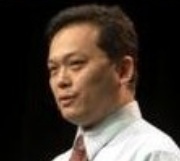
keynote
by Anmol Bhasin,
Abstract
Speaker Bio

Tutorial
speaker
by David A. Ostrowski,
Ford Research and Innovation Center
Abstract
Speaker Bio

Plenary Session:
Challenges of Semantic Computing and Medical Big Data
speaker
by Peter Haug,
Intermountain Healthcare
Abstract
Speaker Bio
Presentation Slide

by William Hsu,
University of California, Los Angeles
Abstract
Speaker Bio
Presentation Slide

by Satya Sahoo,
Case Western Reserve University
Abstract
Speaker Bio
Presentation Slide
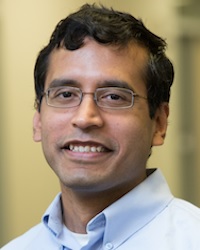
by Tanveer Syeda-Mahmood,
IBM Almaden
Abstract
Speaker Bio
Presentation Slide
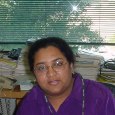
by Wei Wang,
University of California, Los Angeles
Abstract
Speaker Bio
Presentation Slide

Plenary Session:
Plenary Session on Knowledge Graph
speaker
by Giovanni Tummarello,
CEO of SindiceTech
Abstract
Speaker Bio
Presentation Slide
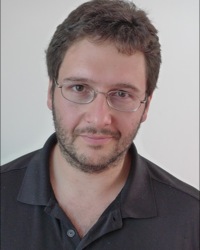
by Steve Simske,
HP Labs
Semantic computing is concerned with the combination of semantic analysis, natural language processing, and data mining approaches to provide machine understanding for a variety of applications. This includes the automatic processing of user intentions, deriving meaning from media, and intelligently mapping user intentions to important downstream tasks such as search, retrieval, information management, and information re-purposing/mashing. Each of these tasks can uniquely benefit from a meta-algorithmic approach.
Meta-algorithmics are a set of more than 20 parallel processing patterns that, combined, offer a set of approaches to building optimized intelligent systems. Specific meta-algorithmic patterns, along with a fully generalized hybrid pattern, allow any intelligent system architect to build robust, accurate and cost- sensitive intelligent systems. Meta-algorithmic patterns range from simpler first-order patterns such as Voting and Predictive Selection to highly-complex third order patterns such as Expert Feedback to provide a repertoire of means to use two or more algorithms, systems or intelligence engines to create better systems. Meta-algorithmics take advantage of the convergent ubiquity of cloud computing, massively parallel processing, and inexpensive storage to afford previously unimaginable data analysis approaches. In this talk, the application of meta-algorithmic approaches to various semantic computing challenges – particular those in categorization, classification, summarization, search, and authentication – will be described. Meta-algorithmics will be shown to provide a third major form of parallel processing (supplementing parallelism by task and by component) to semantic computing scientists, and a new toolkit for improving intelligent system performance.
back to keynotes
HP Labs
Steve Simske is the Director and Chief Technologist for the Content Solutions Lab in HP Labs. His research areas include image processing, image analysis and document understanding technologies ranging from automatic book digitization to and speech recognition. Steve developed the toolset for architecting massive intelligent systems - meta-algorithmics – which affords the combination of two or more intelligent systems to create more robust, accurate and often faster larger systems, or “ecosystems”. This culminated in the recent book, “Meta-Algorithmics” (Wiley & Sons). Steve has earlier worked on medical signal processing for portable medicine, including novel means of reducing biological noise in electrocardiograms (ECGs). Steve created HP’s Security Printing and Imaging program - image analysis, security, analytics and forensics to prevent counterfeiting, protect branded products, and provide investigative support for anti-fraud. This led in part to his invitation to participate as a Member of the World Economic Forum Global Agenda Council on Illicit Trade and Organized Crime for the past four years. Steve is an HP Fellow and has more than 75 US Patents and more than 300 peer-reviewed publications.
back to keynotes
Stephen E. Levinson,
Department of Electrical and Computer Engineering and the Beckman Institute
University of Illinois at Urbana-Champaign
selevins@illinois.edu
In 1950 Albert Einstein addressed the International College of Surgeons. With appropriate humility he insisted that all human mental activity ultimately rests on physics. Twenty-five years ago, the Beckman Institute was conceived as an interdisciplinary laboratory dedicated to the study of human cognition by the cooperative efforts of the physical, biological and social sciences.
Cognitive learning is a complex phenomenon peculiar to humans and, to a lesser extent, higher animals. Since learning is mediated by the central nervous system, its study by qualitative and empirical methods has traditionally been the province of neurobiology and psychology. More recently analogies to natural learning have been drawn to certain information processing technologies including computing, robotics, machine vision and automatic speech recognition in which context it has been treated by appeal to detailed abstract (i. e. non-biological) mathematical models. For historical and organizational reasons, the two approaches are pursued virtually independently. As biology and psychology are becoming more quantitative, this is a propitious time to undertake an interdisciplinary project in which the development of large scale mathematical models is critically informed by known biological and psychological principles. Conversely, the abstract models thus generated should be sufficiently rich to make to make predictions about human behavior that can be evaluated by experiments on anthropomorphic robots. The goal is the construction of a detailed quantitative model and a set of formal organizing principles that together constitute a theory of cognition.
For more than fifteen years, the language acquisition and robotics lab at the Beckman institute has followed precisely this path. We begin with Einstein's reductionist hypothesis tempered by the notions of emergence derived from Gibbs' statistical mechanics and Shannon's information theoretic interpretation. Also invoked are ideas about functional equivalence expressed by Turing's model of thought as formal computation, Wiener's model of homeostasis as stochastic adaptive control and von Neumann's characterization of behavior as utility maximization in social games. Our work is not about robotics or speech or vision. It is about all of them working together to produce intelligent behavior because, we believe, cognitive functions do not exist in isolation and there is no such thing as a disembodied mind. As a cognitive model of reality is acquired, a linguistic image of it is formed primarily in response to sensorimotor perception. When the language is fully acquired, most mental processes are mediated linguistically and we appear to think in our native language which we hear as our mind's voice.
Several examples are given of learned behavior including fine motor control tasks and language acquisition.
back to keynotes
Department of Electrical and Computer Engineering and the Beckman Institute
University of Illinois at Urbana-Champaign
Stephen E. Levinson was born in New York City on September 27, 1944. He received the B. A. degree in Engineering Sciences from Harvard in 1966, and the M. S. and Ph.D. degrees in Electrical Engineering from the University of Rhode Island, Kingston, Rhode Island in 1972 and 1974, respectively. From 1966-1969 he was a design engineer at Electric Boat Division of General Dynamics in Groton, Connecticut. From 1974-1976 he held a J. Willard Gibbs Instructorship in Computer Science at Yale University. In 1976, he joined the technical staff of Bell Laboratories in Murray Hill, NJ where he conducted research in the areas of speech recognition and understanding. In 1979 he was a visiting researcher at the NTT Musashino Electrical Communication Laboratory in Tokyo, Japan. In 1984, he held a visiting fellowship in the Engineering Department at Cambridge University. In 1990, Dr. Levinson became head of the Linguistics Research Department at AT&T Bell Laboratories where he directed research in Speech Synthesis, Speech Recognition and Spoken Language Translation. In 1997, he joined the Department of Electrical and Computer Engineering of the University of Illinois at Urbana-Champaign where he teaches courses in Speech and Language Processing and leads research projects in speech synthesis and automatic language acquisition. He is also a full-time faculty member of the Beckman Institute for Advanced Science and Technology where he serves as the head of the Artificial Intelligence group. Dr. Levinson is a member of the Association for Computing Machinery, a fellow of the Institute of Electrical and Electronic Engineers and a fellow of the Acoustical Society of America. He is a founding editor of the journal Computer Speech and Language and a former member and chair of the Industrial Advisory Board of the CAIP Center at Rutgers University. He is the author of more than 100 technical papers and holds seven patents. His book, published in 2005 by John Wiley and Sons, Ltd., is entitled "Mathematical Models for Speech Technology"
back to keynotes
by Michael Uschold,
Semantic Arts
In large companies, key knowledge assets are often unnecessarily complex, making them hard to understand, evolve and reuse. Ambiguity is at the root of the problem; it is often reflected in poorly structured information. We describe an approach using taxonomy and ontology to root out ambiguity and create a set of building blocks that acts as a solid foundation for creating more useful structure.
We describe the challenges of working with both taxonomy and ontology, and how we married them to provide a foundation that supports integration across a wide range of enterprise assets including spreadsheets, applications and databases.
back to keynotes
Semantic Arts
Michael Uschold is an internationally recognized expert with over two decades experience in developing and transitioning semantic technology from academia to industry. He pioneered the field of ontology engineering, co-authoring the first paper and giving the first tutorial on the topic in 1995 (in London). This leveraged the work he did in creating the influential "Enterprise Ontology".
From October 2010,he has been working as a senior ontology consultant at Semantic Arts, training and guiding clients to better understand and leverage semantic technology. He has built commercial enterprise ontologies in finance, healthcare, legal research, consumer products manufacturing and corporation registration for state government. More recently he has focused on how to combine less formal knowledge organization systems such as thesauri and taxonomies with formal ontology to integrate disparate corporate knowledge assets.
During 2008-2009, Uschold worked at Reinvent on a team that developed a semantic advertising platform that substantially increased revenue. As a research scientist at Boeing from 1997-2008 he defined, led and participated in numerous projects applying semantic technology to enterprise challenges. He is a frequent invited speaker and panelist at national and international events, and serves on the editorial board of the Journal for Web Semantics. He has given numerous tutorials and training classes. He received his Ph.D. in AI from Edinburgh University in 1991 and an Msc. from Rutgers University in Computer Science in 1982.
back to keynotes
by Ching-Yung Lin,
IBM
Cognitive machines are emerging to reason and manage rapidly expanding world of Big Data. Many real-world data are linked. Entities are dependent. Processing, storing, analyzing, retrieving, and visualizing connected data has been a major challenge . Traditional technologies are not equipped to handle these non-uniform, semi-structured, and highly interconnected data. Novel graph computing technologies are being invented and are driving potential paradigm shift.
Graphs may be large or small, static or dynamic, topological or semantic, and property-oriented or Bayesian. Semantic concepts and knowledge as in text, image, video, and audio can be well-represented as graphs. Graphical models have been also showing importance in sequential event understanding and concept reasoning. I am going to discuss Graph Database, High Performance Computing, Middleware, Analytics Library, and Visualization, as well example applications on (1) Cognitive Analytics, which utilizes graphical models to understand and predict people's behavior for Security or Commerce, (2) Social Analytics, which analyzes collective behaviors of people in social media, and (3) Brain Analytics, which models neuron's dynamic networks to understand inner function and correlation. These foundations might be suitable for the progress and future of semantic computing.
back to keynotes
by Anmol Bhasin,
Using Big Data and computing technology to re-imagine the future of the workforce, economic opportunities and flow of capital is a compelling direction of work. Professionals, companies, schools, government units & other public sector organizations complete the set of nodes and digitized explicit & implicit inferred links between them provide for the edges for the digital representation of the physical Economic Graph. This graph facilitates the flow of financial, social and intellectual capital between the nodes. Mining patterns of these capital flows allows for building compelling game changing data products that have the potential to change the future of work.
In this talk, I will present the work done at LinkedIn to first digitize the nodes and edges of the Economic Graph, examples of mining the capital flow and using these building blocks to uncover the tremendous value hidden in plain sight - Finding jobs, recruiting people, facilitating business deals, manage career progressions, bridging the skills gap and peek into numerous other yet unexplored opportunities. We will delve into both the semantic processing of user generated content and metadata on interaction edges as well as applications of Machine Learning and Graph Processing involved in powering these next generation application themes.
back to keynotes
IBM
Ching-Yung Lin is the Manager of the Network Science Department in IBM T. J. Watson Research Center. He is also an Adjunct Professor in Columbia University since 2005 and in NYU since 2014. His research interest is mainly on fundamental research of multimodality signal understanding, network analytics, and computational social & cognitive sciences, and applied research on security, commerce, and collaboration. Since 2011, Lin has been leading a team of more than 40 Ph.D. researchers in worldwide IBM Research Labs and more than 20 professors and researchers in 10- universities and institutes (Northeastern, Northwestern, Columbia, Minnesota, Rutgers, CMU, New Mexico, USC, UC Berkeley, and SRI).
His team focuses on all aspects of large-scale Graph Computing -- graph database, high performance computing graph infrastructure, network graph analysis and graphical models library, and graph visualization. The goal is to create innovative foundation to solve the biggest challenge of Big Data when data are dependent. It is applied to (1) Social/Economic Networks (2) Information/Knowledge Networks (3) Natural/Bio/Cognition/Brain Networks and (4) Communication/Mobile Networks. On Social Cognitive Analytics, the team's focus is on machine-based people understanding for Cognitive Security, Social Analytics, Behavioral Analytics, Neuron Network Analytics, and Audio-Visual Sensing Analytics.
Ching-Yung invented and created the SmallBlue system, an IBM effort for Enterprise Social Network Analysis, Expertise Search, and Knowledge Recommendation. SmallBlue has been featured in more than 120 press articles and were featured 4 times in BusinessWeek, including being the Top Story of the Week in April 2009. SmallBlue helped IBM Corporation won the 1st place in 2012 Most Admirable Knowledge Enterprise (MAKE) Award in enterprise-wide collaboration knowledge-sharing environment. In May 2013, SmallBlue was selected by APQC, the World Leader in Knowledge Sharing Benchmarking and Practices, as the Industry Leader and Best Practice in Expertise Location. In October 2013, SmallBlue was recognized as having made $100M+ productivity contribution to IBM.
Ching-Yung is an author of 160+ publications and 19 issued patents. His team recently won the Best Paper Award in BigData 2013, Best Paper Award in CIKM 2012, and Best Theme Paper Award in ICIS 2011. He is a Fellow of IEEE, a Director of Asia-Pacific Signal and Information Processing Association, and a member of Academy of Management.
back to keynotes
Linkedln
Anmol Bhasin works as Director of Engineering at LinkedIn. He leads a team of engineers & scientists working on recommender systems, online experimentation and site-personalization. His team's contributions include LinkedIn's various personalized recommendation products (e.g., "Jobs You Might Be Interested In"), social news ("LinkedIn Today"), and systems for ad targeting and click through rate prediction. His work also spans content understanding and canonicalization across various data entities like members, jobs, news articles, ad creatives. In addition, he oversees both statistical and operational aspects of LinkedIn online experimentation (A/B testing) systems.
Prior to LinkedIn, Anmol worked at business search engine Business.com, where he developed the crawler, indexing systems, and retrieval algorithms. Anmol has also authored mobile gaming applications, including the award-winning Tecmo Bowl. Anmol received a Masters in Computer Science from the State University of New York at Buffalo, where he focused on text mining and applied machine learning for cross document learning and applying graph mining approaches for scenario analysis on textual data.
back to keynotes
by Wei Wang,
University of California, Los Angeles
Big data analytics is the process of examining large amounts of data of a variety of types (big data) to uncover hidden patterns, unknown correlations and other useful information. Its revolutionary potential is now universally recognized. Data complexity, heterogeneity, scale, and timeliness make data analysis a clear bottleneck in many biomedical applications, due to the complexity of the patterns and lack of scalability of the underlying algorithms. Advanced machine learning and data mining algorithms are being developed to address one or more challenges listed above. It is typical that the complexity of potential patterns may grow exponentially with respect to the data complexity, and so is the size of the pattern space. To avoid an exhaustive search through the pattern space, machine learning and data mining algorithms usually employ a greedy approach to search for a local optimum in the solution space, or use a branch-and-bound approach to seek optimal solutions, and consequently, are often implemented as iterative or recursive procedures. To improve efficiency, these algorithms often exploit the dependencies between potential patterns to maximize in-memory computation and/or leverage special hardware (such as GPU and FPGA) for acceleration. These lead to strong data dependency, operation dependency, and hardware dependency, and sometimes ad hoc solutions that cannot be generalized to a broader scope. In this talk, I will present some open challenges faced by data scientist in biomedical fields and the current approaches taken to tackle these challenges.
back to keynotes
University of California, Los Angeles
Wei Wang is a professor in the Department of Computer Science at University of California at Los Angeles and the director of the Scalable Analytics Institute (ScAi). She is also a member of the UCLA Jonsson Comprehensive Cancer Center. Dr. Wang received her PhD degree in Computer Science from the University of California at Los Angeles in 1999. She was a professor in Computer Science and a member of the Carolina Center for Genomic Sciences and Lineberger Comprehensive Cancer Center at the University of North Carolina at Chapel Hill from 2002 to 2012, and was a research staff member at the IBM T. J. Watson Research Center between 1999 and 2002. Dr. Wang's research interests include big data, data mining, bioinformatics and computational biology, and databases. She has filed seven patents, and has published one monograph and more than one hundred research papers in international journals and major peer-reviewed conference proceedings.
Dr. Wang received the IBM Invention Achievement Awards in 2000 and 2001. She was the recipient of a UNC Junior Faculty Development Award in 2003 and an NSF Faculty Early Career Development (CAREER) Award in 2005. She was named a Microsoft Research New Faculty Fellow in 2005. She was honored with the 2007 Phillip and Ruth Hettleman Prize for Artistic and Scholarly Achievement at UNC. She was recognized with an IEEE ICDM Outstanding Service Award in 2012 and an Okawa Foundation Research Award in 2013. Dr. Wang has been an associate editor of the IEEE Transactions on Knowledge and Data Engineering, ACM Transactions on Knowledge Discovery in Data, Journal of Knowledge and Information Systems, International Journal of Knowledge Discovery in Bioinformatics, and an editorial board member of the International Journal of Data Mining and Bioinformatics and the Open Artificial Intelligence Journal. She serves on the organization and program committees of international conferences including ACM SIGMOD, ACM SIGKDD, ACM BCB, VLDB, ICDE, EDBT, ACM CIKM, IEEE ICDM, SIAM DM, SSDBM, BIBM.
back to keynotes
by Peter Haug,
Intermountain Healthcare
Electronic Health Records have become an unavoidable part of healthcare in the developed countries. These computerized clinical accounts participate broadly in modern medical practice and influence it in various beneficial ways. An important side effect is the large and growing repository of clinical data captured as a part of the care process. In fact, multiple repositories exist taking the form of data warehouses growing and evolving within advanced care delivery systems. Embedded in these large data collections are key characteristics of patient health and disease as well as the many and varied healthcare delivery workflows and styles practiced in clinics and hospitals around the country.
This data has the ability to inform models of medical decision making that can enrich healthcare delivery. Diagnostic and therapeutic decision support systems can be derived, at least in part from the accumulated data found in these large clinical data repositories. In her lap, we have been exploring semantic approaches that can assist in extracting functioning diagnostic and therapeutic models from these large data stores.
Among the technologies that we have found useful in this context are probabilistic decision support systems informed by ontologies and ontologic principals. In this session, I will describe and discuss the development and use of these systems.
back to keynotes
Intermountain Healthcare
Peter Haug is the Director of the Homer Warner Center for Informatics Research at Intermountain Healthcare and a Professor in the Department of Biomedical Informatics at the University of Utah. He is trained in Medicine (University of Wisconsin) with a postdoctoral fellowship in Biomedical Informatics (University of Utah). Previous experience includes the development of components of two different medical information systems. Current interests include (1) the study of tools for natural language processing in medicine; (2) the evaluation of probabilistic decision support systems for use in the health care process; (3) the development of computer-based tools to deliver detailed medical protocols; and (4) various applications of data mining to assist in the development of innovative medical software. His recently efforts have focused on the construction of environments designed to facilitate applied Informatics research and to support the testing of innovative tools for implementing decision support in active clinical settings.
back to keynotes
by William Hsu,
University of California, Los Angeles
The rate at which biomedical literature is being published is quickly outpacing our ability to effectively leverage this information for evidence-based medicine. While papers are readily searchable through databases such as PubMed, clinicians are often left with the time-consuming task of finding, assessing, interpreting, and applying this information. Tools that structure evidence from published papers using a standardized data model and provide an intuitive query interface for exploring documented biomedical entities would be valuable in utilizing this information as part of the clinical decision making process. This talk presents efforts towards developing computational tools and a representation for modeling and relating evidence from multiple clinical trial reports for lung cancer. Challenges related to representing this information in a machine-interpretable manner, assessing study quality, and handling conflicting evidence are described. I discuss the development of two tools: 1) an annotator tool used to extract information from papers, mapping it to concepts in an ontology-based representation and 2) a visualization that summarizes information about a single paper based on information captured in the model. Using lung cancer as a driving example, I demonstrate how these tools help users apply information reported in literature towards individually tailored medicine.
back to keynotes
University of California, Los Angeles
William Hsu is an Assistant Professor with the UCLA Medical Imaging Informatics Group in the Department of Radiological Sciences. He received his Ph.D. in Biomedical Engineering with an emphasis in Medical Imaging Informatics from the University of California, Los Angeles in 2009 and a BS degree in Biomedical Engineering from Johns Hopkins University in 2004. His research interests include medical data visualization, disease modeling, knowledge representation, and imaging informatics. He was recently awarded a grant from the American College of Radiology and serves on the advisory board of the American Medical Informatics Association's Biomedical Imaging Informatics Working Group.
back to keynotes
by Satya Sahoo,
Case Western Reserve University
Healthcare datasets are increasingly characterized by large volume, high rate of generation as well as need for real time analysis (velocity), and variety. These datasets are often termed biomedical big data and include multi-modal electrophysiological signals that record different aspects of human body. In this talk, we focus on the computational challenges associated with signal data management and the role of semantic computing in addressing these challenges. We use the term semantic computing to describe formal knowledge models or ontologies that capture complex domain semantics and multiple components of the Semantic Web technology stack, such as Web Ontology Language (OWL).
We describe a cloud computing platform called Cloudwave that has been developed to effectively manage electrophysiological big data for epilepsy clinical research and patient care. The Cloudwave platform consists of (a) an Ontology-driven Web-based signal visualization and query module, (b) a data processing and storage module that extends the Hadoop Distributed File System (HDFS), and (c) a dedicated middleware layer to efficiently retrieve and transfer data from storage to visualization module. An epilepsy domain ontology plays a central role in Cloudwave by using domain semantics to underpin multiple functionalities.
back to keynotes
Case Western Reserve University
Satya Sahoo is faculty in the Division of Medical Informatics and EECS department at the Case Western Reserve University (CWRU). Satya's research focuses on Semantic Web informatics including: (1) ontology engineering (upper-level reference ontologies to application/domain-specific ontologies), (2) ontology- driven data integration and query optimization, and (3) provenance metadata management. His current research projects include the development of cloud-based "Big data" application for clinical research (Cloudwave), Ontology-driven patient information capture (OPIC), and clinical text interpretation (EpiDEA) using Natural Language Processing (NLP). Prior to joining CWRU, he completed research internships at the National Library of Medicine and Microsoft Research. Satya has served as member of W3C working group to define the new provenance standard called PROV.
Additional information about his research projects is available at: Link
back to keynotes
by Tanveer Syeda-Mahmood, Ph.D,
IBM Research - Almaden
Diagnostic decision support is still very much an art for physicians in their practices today due to lack of scalable quantitative tools. We have been pioneering a scalable approach to clinical decision support that exploits the consensus opinions of other physicians who have looked at similar patients. Unlike previous rule-based decision support systems, this is a data mining approach exploiting the vast amount of patient data and prior diagnosis recorded in medical record systems. The key idea is to find similarity in patient's clinical data modalities in order to infer similarity in patients. Collaborative filtering is then used to obtain a ranked distribution of associated diagnosis, treatment and outcome. Sophisticated medical image analysis, feature extraction, machine learning and search techniques have been developed to find similar patients based on a disease specific analysis of their heart sounds, EKGs, echocardiograms and coronary angiograms in the domain of cardiology. The talk will give an overview of patient similarity technology and describe its evolution over the years from research to healthcare informatics products and solutions.
back to keynotes
SemIBM Almaden
Dr. Tanveer Syeda-Mahmood is the Chief Scientist and Senior Manager leading the global IBM Research-wide Medical Sieve Radiology Grand Challenge project. The goal of this project is to advance IBM Watson for imaging by developing automated radiology and cardiology assistants of the future that help clinicians in their decision making.
Dr. Syeda-Mahmood graduated from the MIT AI Lab in 1993 with a Ph.D in Computer Science. Prior to IBM in 1998, she worked as a Research Staff Member at Xerox Webster Research Center, Webster, NY. Dr. Syeda-Mahmood led the image indexing program at Xerox Research and later at IBM QBIC, and was one of the early originators of the field of content-based image and video retrieval. Currently, she is working on applications of content-based retrieval in healthcare and medical imaging. Over the past 30 years, her research interests have been in a variety of areas relating to artificial intelligence including computer vision, image and video databases, medical image analysis, bioinformatics, signal processing, document analysis, and distributed computing frameworks. She has over 200 refereed publications and over 80 filed patents.
Dr. Syeda-Mahmood was the General Chair of the First IEEE International Conference on Healthcare Informatics, Imaging,and Systems Biology, San Jose, CA 2011. She was also the program co-chair of IEEE CVPR 2008. Dr. Syeda-Mahmood is a Fellow of IEEE. She is also a member of IBM Academy of Technology. Dr. Syeda-Mahmood was declared Master Inventor in 2011.
back to keynotes
Professor
University of Texas, Dallas
Dr. Bhavani Thuraisingham is the Louis A. Beecherl, Jr. I Distinguished Professor in the Erik Jonsson School of Engineering and Computer Science at the University of Texas at Dallas (UTD) effective September 2010. She joined UTD in October 2004 as a Professor of Computer Science and Director of the Cyber Security Research Center which conducts research in data security and privacy, secure networks, secure languages, secure social media, data mining and semantic web. She is an elected Fellow of three prestigious organizations: the IEEE (Institute for Electrical and Electronics Engineers), the AAAS (American Association for the Advancement of Science) and the BCS (British Computer Society). She is the recipient of numerous awards including the IEEE Computer Society’s 1997 Technical Achievement Award for “outstanding and innovative contributions to secure data management” and the 2010 Research Leadership Award for Outstanding and Sustained Leadership Contributions to the field of Intelligence and Security Informatics” presented jointly by the IEEE Intelligent and Transportation Systems Society Technical Committee on Intelligence and Security Informatics in Transportation Systems and the IEEE Systems, Man and Cybernetics Society Technical Committee on Homeland Security. She served as served as an IEEE Distinguished Lecturer between 2002 and 2005. She was also quoted by Silicon India magazine as one of the seven leading technology innovators of South Asian origin in the USA in 2002.
back to keynotes
by Giovanni Tummarello
SindiceTech
Google, Facebook, Yahoo and others have long announced "Knowledge Graph" effort by which information surrounding any aspect of their user experience is connected around a "backbone" of highly structured yet highly flexible semantic information. Outside the world of web giants, the same capabilities would be highly strategic in sectors like life sciences, to finance, technical publishing, defense and more. But is the technology accessible to those that don't have a web giant R&D budget? In this talk, i will discuss what it takes to create a "enterprise knowledge graph" and how a pragmatic combination of "classic" big data processing and techniques that were specifically developed to address the "web of data" or "semantic web" can be used to processing, search and browse thus mastering an data scenario novel for its amount and diversity of data.
back to keynotes
CEO of SindiceTech
Giovanni Tummarllo, Ph.D is a well known figure in world of Semantic Web and linked data for a number of influential projects among which Sindice.com - a specialized search engine for the Web of Data referred to by over 1000 scholarly works, Sig.ma
Her early experiences in industry with the development of hypertext authoring tools inspired her towards underlying questions of combining time-dependent documents (such as video sequences) along with interaction through links into a single model. She was a member of the W3C working group that developed the first SMIL recommendation.
Since the development of the semantic web, she has dedicated herself to improving human access to the ever-expanding 'linked data cloud'. Her current research efforts are focused on improving design methods for human-based interfaces in relation to developing technology.
She is a member of the editorial board for the Journal of Web Semantics, and the New Review of Hypermedia and Multimedia, and was co-programme chair for SAMT 2008 and ACM Hypertext 2003.
back to keynotes
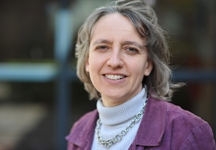
Foto Jeroen Oerlemans
by Roger B. Dannenberg
School of Computer Science, Art, and Music
Carnegie Mellon University
Music understanding is the automatic recognition of pattern and structure in music. Music understanding problems include matching, searching, and parsing problems related to music recognition and music classification. Music semantics is a more difficult subject. Music, like abstract art, rarely denotes anything specific, and one can argue that music semantics is an oxymoron. Nevertheless, music can be associated with emotions and many other terms or tags, leading to representations similar to those used for semantic computation in other domains. We are at a time of music revolution where old practices of publishing and recording are being challenged by new technologies and consumer expectations. I believe this revolution will continue with the advance of music computation, which will enable new forms of music practice. Music understanding and semantic computing will play an important role in the future of music.
back to keynotes
Herbert A. Simon Professor
Computer Science Department
Carnegie Mellon University
Manuela M. Veloso is Herbert A. Simon Professor of Computer Science at Carnegie Mellon University. She directs the CORAL research laboratory, for the study of agents that Collaborate, Observe, Reason, Act, and Learn, www.cs.cmu.edu/~coral. Professor Veloso is a Fellow of the Association for the Advancement of Artificial Intelligence, and the President of the RoboCup Federation. She recently received the 2009 ACM/SIGART Autonomous Agents Research Award for her contributions to agents in uncertain and dynamic environments, including distributed robot localization and world modeling, strategy selection in multiagent systems in the presence of adversaries, and robot learning from demonstration. Professor Veloso is the author of one book on "Planning by Analogical Reasoning" and editor of several other books. She is also an author in over 200 journal articles and conference papers.
back to keynotes
Associate Professor
Biomedical Informatics at the University of Pittsburgh School of Medicine
Director of the Pittsburgh Graduate Training Program in Biomedical Informatics
Rebecca Crowley is an Associate Professor of Biomedical Informatics at the University of Pittsburgh School of Medicine and Director of the Pittsburgh Graduate Training Program in Biomedical Informatics. She received her MD and MS in Information Science from the University of Pittsburgh, and her post-graduate training in Pathology and Neuropathology at Stanford University. Dr. Crowley was a National Library of Medicine (NLM) Fellow in Biomedical Informatics, and a Howard Hughes Medical Institute Fellow in Molecular Neuroendocrinology. Her research interests include applications of semantic technologies to clinical teaching and translational biomedical research as well as the sociotechnical requirements and consequences of sharing biomedical data. Dr. Crowley has also contributed to several large scale biomedical data sharing consortia focused on semantic interoperability including the Cancer Biomedical Informatics Grid (caBIG).
back to keynotes
Associate Research Professor
School of Computer Science, Art, and Music
Carnegie Mellon University
Dr. Roger B. Dannenberg is an Associate Research Professor in the Schools of Computer Science, Art, and Music at Carnegie Mellon University, where he is also a fellow of the Studio for Creative Inquiry. Dannenberg is well known for his computer music research, especially in real-time interactive systems. His pioneering work in computer accompaniment led to three patents and the SmartMusic system now used by tens of thousands of music students. He also played a central role in the development of the Piano Tutor, an intelligent, interactive, automated multimedia tutor that enables a student to obtain first-year piano proficiency in less than 20 hours. Dannenberg held a patent for large-scale interactive games controlled by crowd noise, and these "stadium games" have entertained many NFL fans. Other innovations include the application of machine learning to music style classification and the automation of music structure analysis. As a trumpet player, he has performed in concert halls ranging from the historic Apollo Theater in Harlem to the Espace de Projection at IRCAM, and he is active in performing jazz, classical, and new works. His compositions have been performed by the Pittsburgh New Music Ensemble, the Pittsburgh Symphony, and at festivals such as the Foro de Musica Nueva, Callejon del Ruido, Spring in Havana, and the International Computer Music Conference.
back to keynotes
David Ostrowski works at the Ford Research and Innovation Center as a Technical Expert in Data Mining and Machine Learning concentrating in the area of Social Media Analytics. Dr. Ostrowski holds a Doctorate in Computer Science from Wayne State University and has over 27 years of industry experience in software development within many areas including real-time data acquisition and analytics. He has 15 years of experience teaching CIS curriculums at the undergraduate and graduate levels. Dr. Ostrowski also has over 40 refereed publications, two book chapters, numerous technical reports, and participates within several technical committees including IEEE TEC transactions, IEEE ICSC and IEEE ICIOS.
back to keynotes

by David A. Ostrowski
Ford Research and Innovation Center
This tutorial will specifically step each student though the installation, setup and implementation of Hadoop architecture on Amazon Web Services. Included topics are the HIVE and PIG query languages, HDFS file system as well as the Apache Mahout Machine Learning package. Additional Hadoop-based techniques / frameworks will be explored including custom Map Reduce programming relying on Hadoop Streaming I/O and the Python programming language as well as Apache Spark and Shark relying on the Scala Programming language. Overall architecture design will also be explored as well as the future direction of the Big Data software suite. Bring your laptop and amazon account to engage in hands-on examples leaving with experience in all mentioned technologies.
back to keynotes
Industry Session Call for Papers
IEEE ICSC 2014: The Eighth IEEE International Conference on Semantic Computing
September 16-18, 2013
Irvine, CA
Program Goals and Format:
The goals of the ICSC 2014 Industry Session are to foster exchanges
between practitioners and the academics, to promote novel solutions to
today's challenges in the area of Semantic Computing and applications, to
provide practitioners in the field an early opportunity to evaluate
leading-edge research, and to identify new issues and directions for
future research and development efforts. Similar to regular papers, the
papers in the industry session will undergo a review process and will
appear in the conference proceedings. However, the selection criteria for
industry papers are slightly different. In particular, papers should
describe technologies, methodologies, applications, prototypes or
experiences of clear industry relevance. A main goal of this session is to
present research work that exposes the academic and research communities
to challenges and issues important for the industry. Therefore, the papers
in this session will be evaluated primarily by the novelty and
applicability of the insights from its industrial solutions, instead of
the originality of its algorithmic content.
Topics of Interest:
Topics of particular interest include but are not limited to those
identified in the main conference CFP, as well as those listed below:
1. Development of new semantic systems, architecture, and standards
2. Employment of semantic computing tools and interfaces
3. Employment of large-scale semantic systems
4. Benchmarking and performance evaluation of semantic systems
5. Innovative solutions for performance optimization
6. Mobile semantic systems and services
7. Multimedia semantic content analysis and retrieval systems
8. Modeling issues and case studies of semantic computing
9. Game and entertainment applications
10. e-Business and other applications
11. Analysis of industry-specific trends and challenges
Important Dates:
Submission: June 10, 2013
Notification: June 28, 2013
Conference: September 16-18, 2013
Industrial Paper Submission:
Industrial papers should be submitted via the ICSC 2014 online paper
submission system. Industry Session papers should be no longer than 8
pages with the same submission guidelines available on the ICSC 2014 web
page. Only electronic submission will be accepted. All industrial papers
will be peer-reviewed and published in the conference proceedings, which
will be published by the IEEE Computer Society Press. Submissions must not
be published or submitted for another conference.
Industry Session Co-Chairs:
Abha Moitra, GE Research, USA
David Ostrowski, Ford, USA
-------------------------------------------------------------
Note:
1. Every paper accepted for publication in the Proceedings of ICSC 2014
MUST be presented during the conference.
2. Every paper accepted for ICSC 2014 MUST have attached to it at least
one registration at the full member/nonmember rate. Thus, for a paper for
which all authors are students, one student author will be required to
register at the full registration rate.
Sören Auer, University of Leipzig, Germany
Agnese Augello, ICAR-CNR
Ramazan Aygun, University of Alabama, Huntsville, USA
Kathy Baker, US Government, USA
Lamberto Ballan, University of Florence, Italy
Roberto Basili, Univ. of Roma Tor Vergata, Italy
Stephen Beale, University of Maryland, Baltimore County, USA
Ivan Bedini, Bell Labs
Marco Bertini, Universita' degli Studi di Firenze, Italy
Michael Bloodgood, University of Maryland, USA
David Bracewell, Language Computer Corporation
Thorsten Brants, Google Inc., USA
Volha Bryl, Fondazione Bruno Kessler
Nicoletta Calzolari, Istituto di Linguistica Computazionale del CNR, Italy
Kasturi Chatterjee, TechnoratiMedia Inc., USA
Chao Chen, Capital One Bank, USA
Matthew Cooper, FXPAL, USA
Jason Corso, SUNY at Buffalo, USA
Alfredo Cuzzocrea, University of Calabria, Italy
Claudia D'Amato, University of Bari, Italy
Ernesto D'Avanzo, Università degli Studi di Salerno, Italy
Thierry Declerck, DFKI GmbH, Germany
Zhongli Ding, Google Inc., USA
Massimo Esposito, ICAR-CNR, Italy
Nick Evans, EURECOM, France
Alex Chengyu Fang, The City University of Hong Kong, China
Nicola Fanizzi, Dipartimento di Informatica, Università di Bari, Italy
David Farwell, Universitat Politecnica de Catalunya
Luigi Gallo, ICAR-CNR, Italy
Marsal Gavalda, Expect Labs, USA
Jose Manuel Gomez-Perez, Intelligent Software Components (iSOCO) S.A.
Thomas Gottron, University of Koblenz-Landau, Germany
William I. Grosky, University of Michigan-Dearborn, USA
Simon Handley, Expect Labs, USA
Sanda Harabagiu, University of Texas at Dallas, USA
Choochart Haruechaiyasak, National Electronics and Computer Technology Center, Thailand
Takako Hashimoto, Chiba University of Commerce, Japan
Johannes Heinecke, France Telecom
Stacie Hibino, Eastman Kodak Company, USA
Eduard Hovy, University of Southern California, USA
Wolfgang Hürst, Utrecht University, The Netherlands
Beth Huffer, Lingua Logica, USA
Chengjia Huo, University of Calfornia, Irvine, USA
Eero Hyvönen, Aalto University and University of Helsinki, Finland
Ichiro Ide, Nagoya University, Japan
Hasan Jamil, Wayne State University, USA
Artem Katasonov, VTT Technical Research Centre of Finland, Finland
Doo Soon Kim, University of Texas at Austin, USA
Tracy Holloway King, Microsoft, USA
Ruediger Klein, Fraunhofer IAIS, Germany
Lars Knipping, Berlin Institute of Technology, Germany
Stanley Kok, Singapore University of Technology and Design, Singapore
Yiannis Kompatsiaris, Informatics and Telemantics Institute, Greece
Arnd Christian König, Microsoft Research, USA
Shuichi Kurabayashi, Keio University SFC, Japan
Marco La Cascia, University of Palermo, Italy
Freddy Lecue, University of Manchester, UK
Ying Li, IBM T.J. Watson, USA,
Alexander Loui, Eastman Kodak Company, USA,
Hongli Luo, Indiana University - Purdue University Fort Wayne, USA
Umberto Maniscalco, CNR, Italy
Elio Masciari, ICAR-CNR, Italy
David McDonald, Smart Information Flow Technologies (SIFT), USA
Dennis McLeod, University of Southern California, USA
Marjorie McShane, University of Maryland Baltimore (UMBC), USA
Farid Meziane, University of Salford, UK,
Adrian Mocan, SAP AG, Germany,
Fionn Murtagh, Royal Holloway University of London, UK
Shinichi Nagano, Toshiba Corporation, Japan
Costanza Navarretta, Center for Sprogteknologi,Denmark
Matthias Nickles, Technical University of Munich
Carlos Pedrinaci, Knowledge Media Institute, The Open University, UK
Nick Pendar, Uptake Networks, USA
Roberto Pirrone, DINFO - Universita' di Palermo, Italy
Luigi Pontieri, ICAR-CNR, Italy
Alessandro Provetti, University of Messina, Italy
Matthew Purver, Queen Mary University of London, UK
Riccardo Rizzo, ICAR-CNR, Italy
Marco Rospocher, Fondazione Bruno Kessler
Sebastian Rudolph, Karlsruhe Institute of Technology, Germany
Irene Russo, Istituto di Linguistica Computazionale - CNR Pisa, Italy
Harald Sack, HPI, Germany
William Schuler, The Ohio State University, USA
Dylan Seychell, University of Malta
Alkis Simitsis, HP Labs
Ravi Sinha, University of North Texas, USA
Chad Takahashi, Otto Inc., USA
Matthias Thimm, Universität Koblenz-Landau, Germany
Marc Tomlinson, Language Computer Corporation
Thanh Tran, San Jose State University, USA
Filippo Vella, ICAR-CNR, Italy
Marc Verhagen, Brandeis University, USA
René Witte, Concordia University, Canada
Pia-Ramona Wojtinnek, University of Oxford, UK
Zhuli Xie, Yahoo! Labs, USA
Jianhua Yan, PayPal, an eBay company, USA
Ziming Zhuang, Yahoo! Labs, USA
Roger Zimmermann, National University of Singapore, Singapore
The Hyatt Regency Newport Beach is now taking reservations for ICSC 2014 at a discounted room rate with complimentary guest room Internet!
Based on availability, ICSC 2014 hotel reservations are offered until May 16, 2014.
Reserve your room at the Hyatt Regency Newport Beach while space is still available!
Please make your reservation online here: ICSC2014 GROUP RATE RESERVATION.
Or you may call their toll fee number: 888.421.1442, and mention "ICSC 2014".
Call for Demonstration
IEEE ICSC 2014: The 8th IEEE International Conference on Semantic Computing
September 16-18, 2013
Irvine, CA
The IEEE ICSC 2014 organizing committee invites proposals for
demonstrations to be given at the conference. The demonstrations provide a
forum for researchers as well as industry participants to demonstrate
working systems, applications, tools or showcases of base technologies to
the conference attendees. The goal of the demonstrations is to show a
spectrum ranging from research prototypes to pilots developed and even
products that use semantic technology and provide functionality based on
semantics in the context of semantic computing. For submissions to this
event, it is very important to describe the demonstration setup,
functionality and benefit to the viewer of the demonstration. Technical
background discussion can be presented at the actual demonstration or can
be submitted as an industry track or regular conference paper; the focus
of the demonstration themselves should be to show the functionality to
viewers. It is expected that the demonstrations are highly interactive.
Topics for demonstrations include but are not limited to:
* Content and Information Management
* Knowledge Engineering
* Data Mining
* Semantic Database Theory and Systems
* Service-oriented Architectures and Computing
* Semantic Web and Semantic Web Services
* Multimedia Semantics
* Audio and Speech Processing
* Natural Language Processing
* Semantic Search Technologies and Applications
* User Interfaces
Demonstrations are ideally demonstrating a system or application that
clearly shows the benefit of using and deploying semantics and semantic
technologies. In addition, tools and base technologies that implement or
use semantic technology or semantic approaches are invited for
demonstration.
Demonstration Setup
The demonstrations are planned to be a single event during a conference
reception function, open to all conference attendees, with the goal of
open and constructive discussions. One table will be provided with power
as well as an Internet connection. Posters can be put up behind or next to
the tables (depending on the space) either on pin boards or the wall.
Demonstrators must bring any additional equipment they require as no
equipment will be provided by the conference.
Demonstration Submissions
Authors submitting papers to the demonstrations must submit a 2-page paper
that clearly outlines the demonstration that will be set up and the
functionality a visitor to the demonstration can observe. The technical
background, such as the architecture or algorithms, should not be
described in detail; such a description would be better submitted to the
industry track or main conference paper track. Including links to
supporting material, e.g. a video on the web or a web-based demo itself,
is highly encouraged. All submissions must be in double-column IEEE format
and follow the specific submission guidelines on the ICSC2012 web page.
The Conference Proceedings will be published by the IEEE Computer Society
Press and the accepted demonstration submissions will be included in the
conference proceedings.
Important Dates
Demo Submission: June 10, 2013
Notification: June 28, 2013
Conference: September 16-18, 2013
Submissions
Researchers and practitioners are invited to submit demo proposals to the
demo co-chair
Please include "[ICSC2013-DEMO]" in the subject of your emails.
Call for Applications
2nd International Summer School on Semantic Computing
July 25-31, 2010
University of California, Berkeley
co-sponsored by IEEE, Institute of Semantic Computing and STI International
Semantic Computing is currently emerging as a new field that integrates methods from multimedia (computer vision, speech processing), natural language processing, semantic web and ontology engineering, software engineering, and other fields with the goal of creating new applications that connect intuitively formulated user-intentions with the content of data.
The summer school will provide an introduction to the field to senior undergraduate and graduate students. A mix of young and well-established researchers and educators will present recent research results, as for example presented in the IEEE conferences on Semantic Computing. The tutorials will be complemented by keynote talks by renowned experts in the areas of Semantic Technologies, Ontologies, Multimedia or Natural Language Processing.
The 6-day event is taking place on the campus of the University of California, Berkeley and the curriculum will include the following topics:
- Formal Semantics
- Semantic Web
- Ontology Engineering
- Multimedia
- Natural Language Processing
Important Dates:
* May, 1: Application deadline
* May, 15: Notification of acceptance/Registration opens
* June, 15: Registration completed
* July, 25: School starts
For instruction on how to apply and other information, please
visit the following website: http://sssc2010.org
Manuscripts must be written in English and follow the instructions in the Manuscript Formatting and Templates page
Document templates are located at:
Regular Papers should be no longer than eight (8) pages, Short Papers should be no longer than four (4) pages, Demonstration Papers and Posters should be no longer than two (2) pages.
All paper submissions will be carefully reviewed by at least three experts and reviews will be returned to the author(s) with comments to ensure the high quality of the accepted papers. The authors of accepted papers must guarantee that their paper will be presented at the conference. Please only submit original material where copyright of all parts is owned by the authors declared and which is not currently under review elsewhere. Please see the IEEE policies for further information.
Technical Paper Submission Instructions
Only electronic submission will be accepted. Technical paper authors MUST submit their manuscripts through EasyChair. Please follow this link (please register if not an EasyChair user). Manuscripts may only be submitted in PDF format.
A copyright form needs to be submitted upon acceptance of the paper and is not required at this stage.
Note:
1. Every paper accepted for publication in the Proceedings of ICSC 2014 MUST be presented during the conference.
2. Every paper accepted for ICSC 2014 MUST have attached to it at least one registration at the full member/nonmember rate. Thus, for a paper for which all authors are students, one student author will be required to register at the full registration rate.
The registration deadline is April 20 for authors and April 30 for general participants.
At least one author each paper has to pay a full registration.
We accept online credit card payment. Please access Online Registration System to register.
If you are not in U.S., you might need to ask your credit card bank first to allow foreign transaction.
Email any question regarding registration to Shao-Ting Wang at shaotinw@uci.edu
ICSC Tutorial on Semantic Computing with Big Data
The tutorial is free for the conference attendees.
If you intend to attend the tutorial only without registration of the main conference, the fee is $395 and please register Here.
Those who need to apply for Visa, please send an email to Dr. George Wang twang@csun.edu as follows:
* In the subject line write "Visa Letter for IEEE ICSC 2014"
* Provide the full title of the paper including the author list and affiliation and the name of the presenter seeking the letter for Visa.
* Indicate the relevant information regarding "Regular", "Short", "Poster", "Industry", etc.
ICSC2014 Author Kit Link
Important Date:
- April 20, 2014: Deadline for Camera-ready and Copyright Form Submissions
© IEEE-ICSC 2014
